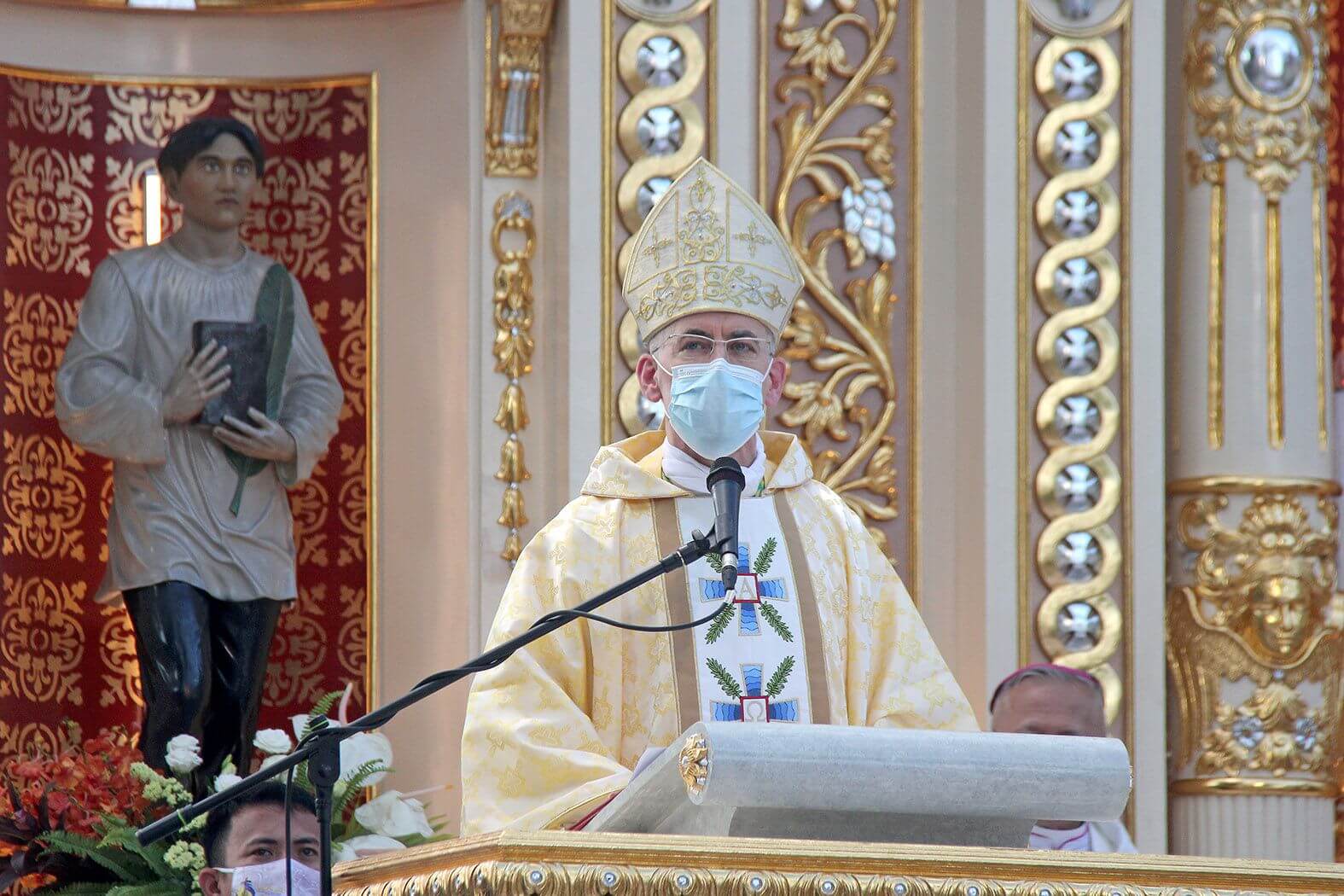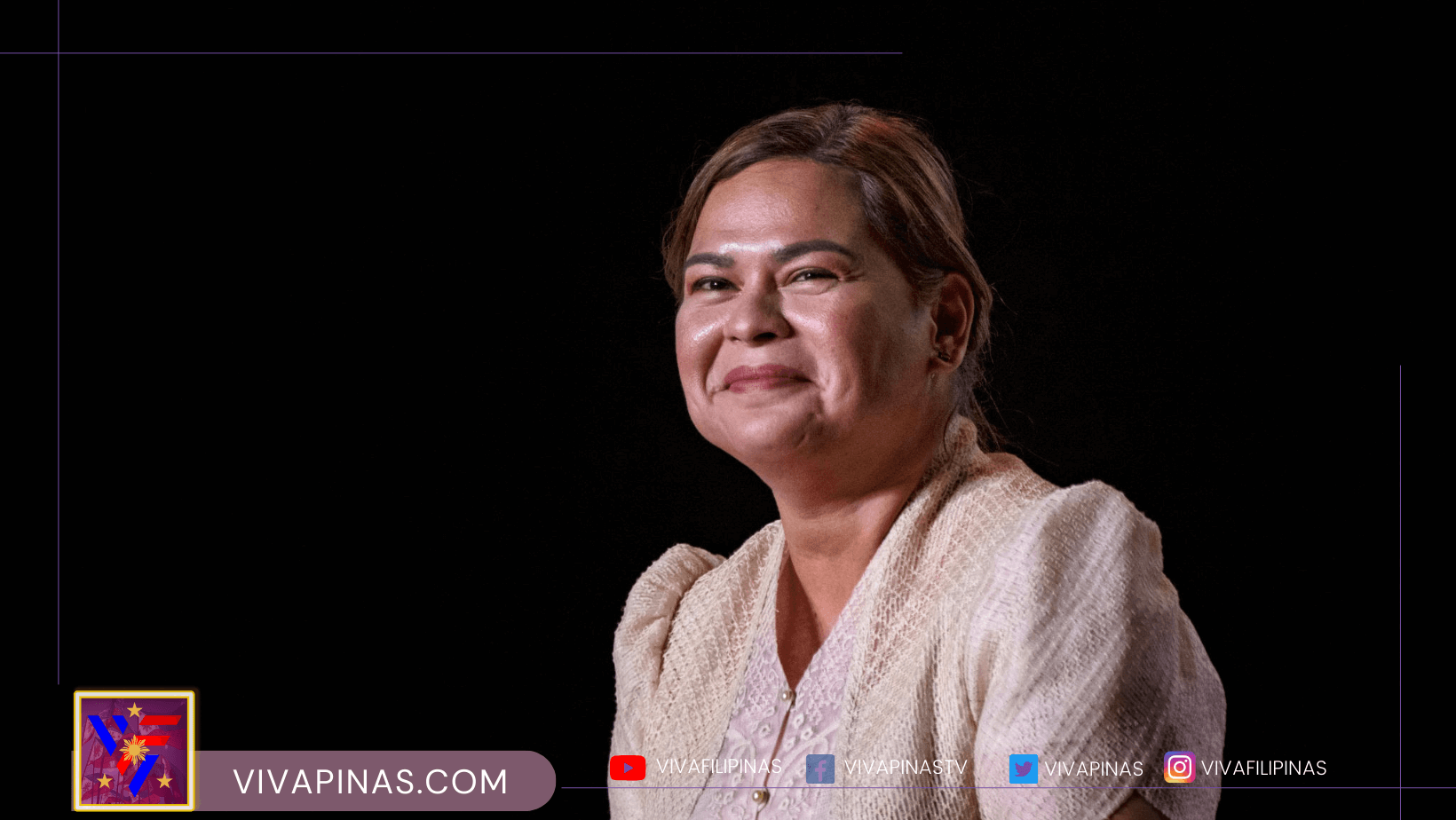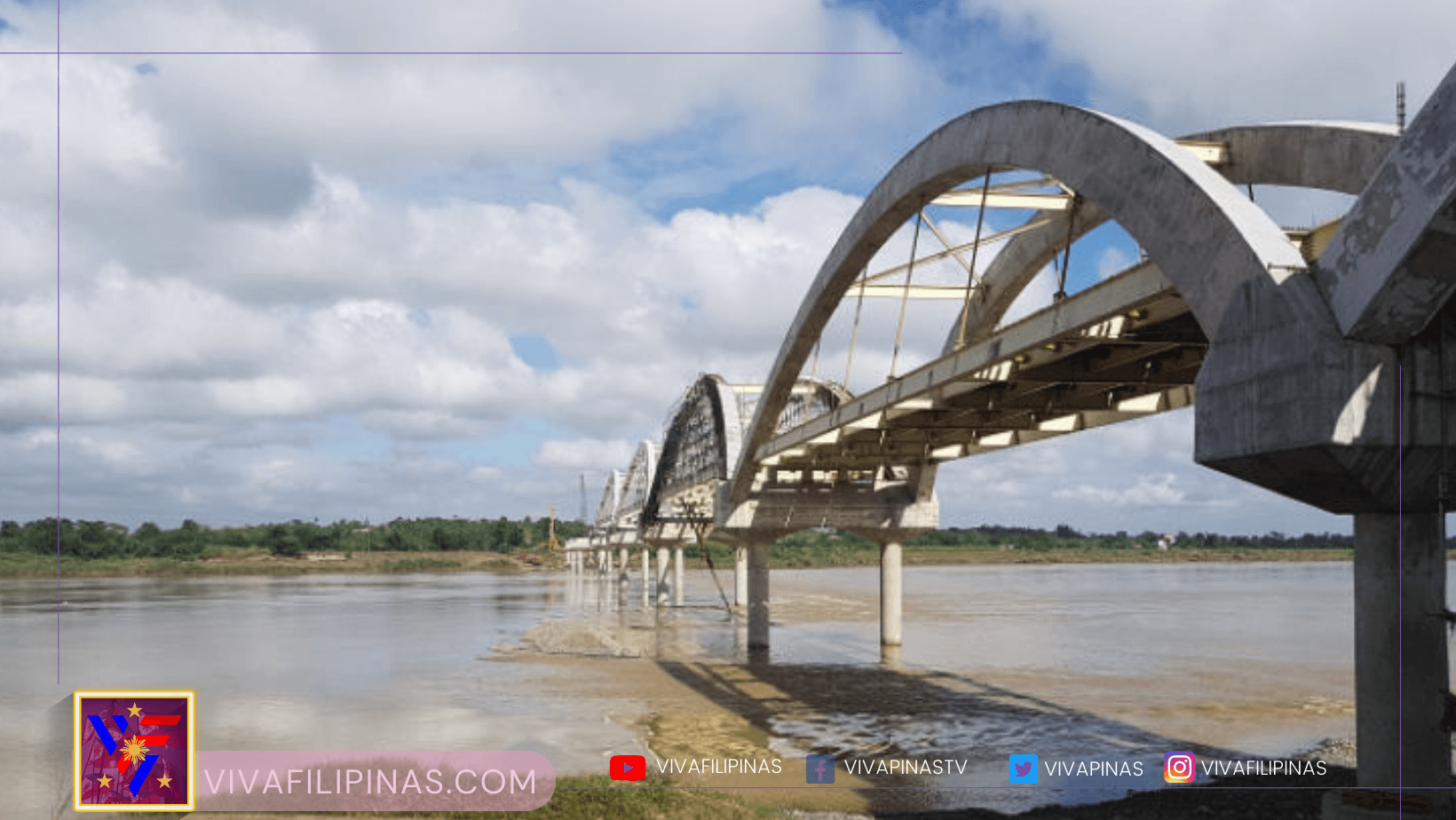
CEBU City— Papal Nuncio Archbishop Charles Brown celebrated Mass to commemorate the 500th anniversary of the first Catholic baptism in the country at Plaza Sugbo in Cebu City on Wednesday, April 14. Here’s the full text of his homily::
It is indeed a great joy and an immense privilege for me as your Apostolic Nuncio to be here with all of you today in Cebu to commemorate the First Baptism and the Gifting of the image of the Santo Niño to Queen Juana, which took place 500 years ago today on April 14, 1521. I am profoundly grateful to His Excellency, the Most Reverend Archbishop José Palma, for having invited me to be the celebrant and preacher at this Mass on this historic occasion here in the Archdiocese of Cebu. I want to greet the concelebrating Bishops and priests, and in a special way His Eminence Cardinal Quevedo.
As we know, Ferdinand Magellan and his crew had reached the Philippines on March 16, 1521, landing on the then uninhabited island of Homonhon. There they collected food and water before moving on to Limasawa, where they arrived on Easter Sunday, March 31, 1521 and celebrated Holy Mass. From Limasawa, they came here to Cebu, arriving about a week later, and here the Cebu chieftain Rajah Humabon and his queen Hara Humamay were baptized, along with hundreds of their subjects, the chieftain and his queen becoming Carlos and Juana of Cebu. They were baptized by the chaplain of Magellan’s expedition, Father Pedro de Valderrama. And Magellan’s chronicler, the Venetian, Antonio Pigafetta, gave the statue of the Santo Niño to Queen Juana as a baptism gift.
Five hundred years ago today, the first baptisms in the Philippines, here in Cebu – we can point to that moment as the beginning of the evangelization of the Philippine Islands, the arrival of the light of Christ, the arrival of the Gospel of salvation in these islands.
As we heard in the first reading from the prophet Isaiah, “I will sprinkle clean water upon you to cleanse you from all your impurities, and from all your idols I will cleanse you. I will give you a new heart and place a new spirit within you, taking from your bodies your stony hearts and giving you natural hearts. I will put my spirit within you and make you live by my statutes, careful to observe my decrees”.
This new spirit is the Holy Spirit; it is the breath of Jesus, the life of Jesus, which he breathed upon his apostles in the Gospel that we heard last Sunday on Divine Mercy Sunday.
And how beautiful it is that today we celebrate what happened 500 years ago by doing exactly the same thing that Father Pedro de Valderrama did. We will baptize; we will give rebirth in the Spirit to these seven children, by means of the water of Baptism; we will give them the light of Christ.
When we reflect on what happened here 500 years ago, we cannot fail to notice that Christianity arrived in the Philippines by means of a European expedition, motivated primarily by commercial and national interests. Spain sought a new route to the famous “Spice Islands” in the Moluccas. But we should not forget that Magellan’s crew was very international and, in fact, it was not exclusively European – even if Europeans made up its vast majority. In addition to the numerous Spaniards and Portuguese, there were men from Greece, Germany, Italy, Sicily, France, Malaysia, North Africa, Flanders, Holland and even Ireland.
So the arrival of Magellan’s boats certainly signifies the arrival of Europeans in the Philippine Islands for the first time. But as we reflect on the fact that it was a European expedition that brought the Catholic faith to the Philippines, we are confronted with a paradox. And the paradox is this: that Christianity is a faith that began in Asia and then spread throughout the world, into large parts of Asia, North Africa and Europe. The first nation to become Christian was in Asia: Armenia, at the beginning of the fourth century. Then in 1521, in God’s providence, it was through Europe that the Catholic Faith arrived in this part of Asia, in the islands of the Philippines.
The Asian roots of Christianity were emphasized by Saint John Paul II in his Apostolic Exhortation published in 1999 Ecclesia in Asia, in which Saint John Paul wrote the following words: “The history of the Church in Asia is as old as the Church herself, for it was in Asia that Jesus breathed the Holy Spirit upon his disciples and sent them to the ends of the earth to proclaim the Good News and gather communities of believers” (par. 9). So, we have this paradox of the arrival of the Christian faith here in the Philippines: that the Faith which itself was born in Asia was then brought here first by means of European explorers, adventurers and colonizers, who were accompanied by missionaries.
And, as Saint John Paul II went on to say in that same document, it “was inevitable that the proclamation of the Gospel by Western missionaries would be influenced by the cultures from which they came” (par. 20). That should not surprise us. At the outset of the missionary proclamation of salvation, the outward forms of that proclamation would reflect the Catholic culture of the missionaries themselves. But what is beautiful about Philippine Catholicism and what we celebrate today is the fact that in these five centuries, the Catholic faith has entered deeply into Filipino culture and produced a distinctively Filipino expression of the unchanging and universal truth of the Catholic faith. We see the results of that process in countless elements of Filipino Catholicism; for example, in Simbang Gabi Masses. Today, in a special way, we see that process in our devotion to the Santo Niño. As Pope Francis recently commented in his video message to you for the 500th Anniversary of the first preaching of the Gospel in the Philippines: “The tender love of the Santo Niño […] is a symbol of the arrival of Christianity in your archipelago.” Yes, devotion to the Holy Child Jesus, to the Infant of Prague, began in Europe, and then came to the Philippines, where it has been transformed into a typically Filipino devotion, so beautifully evident in your annual Sinulog-Santo Niño Festival here in Cebu.
And today, 500 years after Queen Juana embraced the Child Jesus and was baptized and danced with beautiful joy, the same Catholic faith is being carried throughout the world by Filipino Catholics, not as colonizers, but in many cases as Overseas Filipino Workers, bringing with them their Catholic faith and their devotion to the Santo Niño to every corner of the world.
In 1521, the Catholic faith came to the Philippines by means of an expedition sent by Spain; in 2021, the Apostolic Nuncio sent to Spain by the Holy Father Pope Francis has come from the Philippines, Archbishop Bernardito Ausa. What a wonderful gift!
So, the faith that began in Asia was transported to this part of Asia by Europeans and now is being re-transported back to Europe and other places around the world by Filipinos. And what do we see in this? We see the universality of the Catholic faith. The Catholic faith cannot be identified with any single culture; it is rather the life-giving truth of God that can be embraced by any culture and, with time, will transform that culture so that – as here in the Philippines – that culture will give its own particular expression to the Catholic faith.
Now, of course, none of us can pretend that in 500 years of Christianity in the Philippines there haven’t been difficulties and contradictions – even attitudes and mentalities which at times did not reflect the message of Jesus. That is true of the Church as a whole, and it is true of the Church in the Philippines. There is light and darkness. But what we celebrate today is the light.
The beautiful light of Christ which shone in the heart of Queen Juana as she danced, the beautiful light of Christ which will soon shine in the children who will be baptized today, and which will be expressed by the lighted candle that their godparents will receive, as I say to the newly-baptized children: “You have been enlightened by Christ. Walk always as children of the light and keep the flame of faith alive in your hearts. When the Lord comes, may you go out to meet him with all the saints in the heavenly kingdom.” This is an aspiration that the Philippine nation, and all of us here today, can make our own on this historic day. Five hundred years ago today the Philippines was enlightened by Christ. Let us continue to walk always as children of the light, keeping the flame of faith alive in our hearts so that, when the Lord comes to call each of us, we may go out to meet him and enter into life with all the saints in the heavenly kingdom.
Let us turn to Our Lady, affectionately known here in Cebu as Inahang Maria, she who, together with Saint Joseph, whose year we are celebrating, took care of the Santo Niño in their humble home in Nazareth. As Pope Francis said in his video message to the Philippine nation, the Santo Niño reminds us “of the hidden life of the Holy Family in Nazareth. Mary and Joseph raised the Child Jesus with love. By opening the doors of your families to the Holy Child, you too will be able to transmit to your children the faith that you received from your parents. Thank you [Pope Francis said] for that deep sense of family, community and fraternity that keeps you firm in faith, joyful in hope and attentive in charity.”
So, my dear brothers and sisters, let us ask the Holy Family – Jesus, Mary and Joseph – to bless, protect and inspire all Filipino families, especially in this difficult time of the covid pandemic. And let us recommit ourselves today to our own baptismal calling so that we will be witnesses to the light of Christ not only here in the Philippines, but indeed throughout the entire world.
May God bless you!
Happy Five Hundredth Anniversary!




